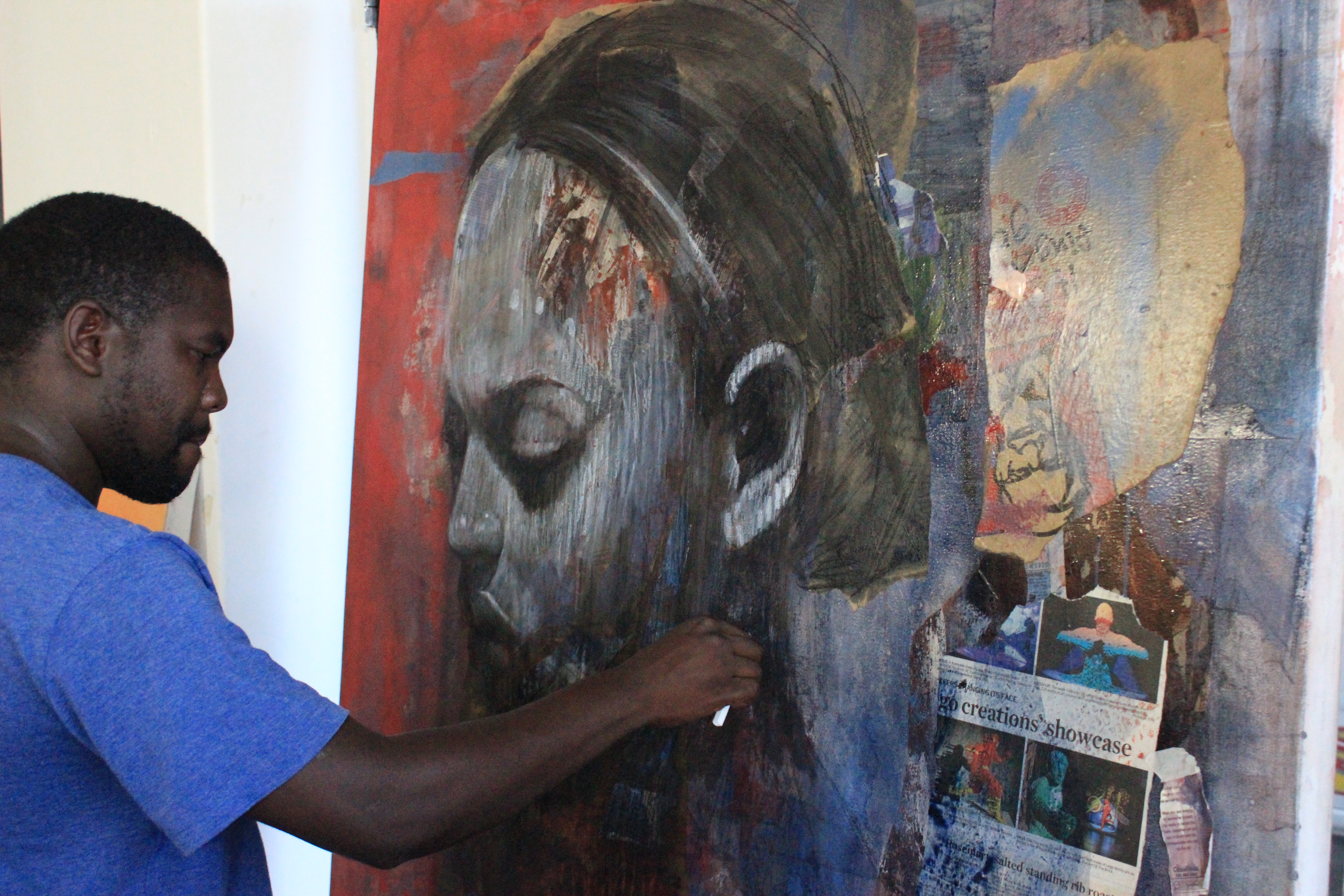The NJE Collective‘s latest group exhibition opened at Gallery One11 last night and has as its focus its Womxn contributors and the themes intrinsic in their practice incited by the current realities in Namibia on a political, socio-economic and cultural level.
In discussion with a member of the group, Jo Rogge, she expresses that ‘Trauma & Identity’ relates to individual and collective realities that Namibian citizens are faced with in a time when Namibia suffers under immense poverty, rife corruption, gender violence, unemployment and the depletion of national resources amongst other factors. Jo adds that, “…the queer space while dynamic, remains a vulnerable target for random hate-speech and physical assault.”
The participating artists for the exhibition include Jo Rogge, Masiyaleti Mbewe, Tuli Mekondjo, Silke Berens, Tangeni Kauzuu and Hildegard Titus. The artists engage in equivocal concerns founded on personal as well as political experiences. The experiences addressed include gender and cultural identity, nationhood, belonging and recognition. Jo explains, “This exhibition encapsulates the diversity and complexity of individual and collective narratives as witnessed through the lens of each artist, drawing on either historical or current narratives.” Artworks that will be featured will include photographs, paintings, installation, and mixed media works.
The relevance of this discourse within a South African gallery space is elaborated on by Jo as, “Namibia’s history is closely aligned with that of SA with the SADF having fought a bloody war against SWAPO on its northern borders from 1966 until prior to Independence in 1990. The post-colonial space is darkened with the lingering shadows of the apartheid system and racism. Unlike South Africa, Namibia has never seen the need for a process of reconciliation and there is a lot of unresolved trauma and pain in the national consciousness.”

NJE Collective, formerly known as SoNamibia, decided to change their collective name in order to embrace multilocality as a means to evade issues concerning nationality that is regarded as patriarchal and exclusive.
Members of NJE Collective are either invited to take part in a specific exhibition or approach the collective themselves to become members of the group. The collective’s fluid membership means that members remain active by choice. Currently, the collective has eight practicing members.
* NJE functions under its own management, towards shared goals. It is also a space for mentoring, peer support and sharing resources. Meetings take place individually as well as in a group format in order to discuss topics of common interest, creative practice, and the potential for collaboration.
Come and support the work of these Womxn artists whose show will run at Gallery One11 until the 28th April 2018.





